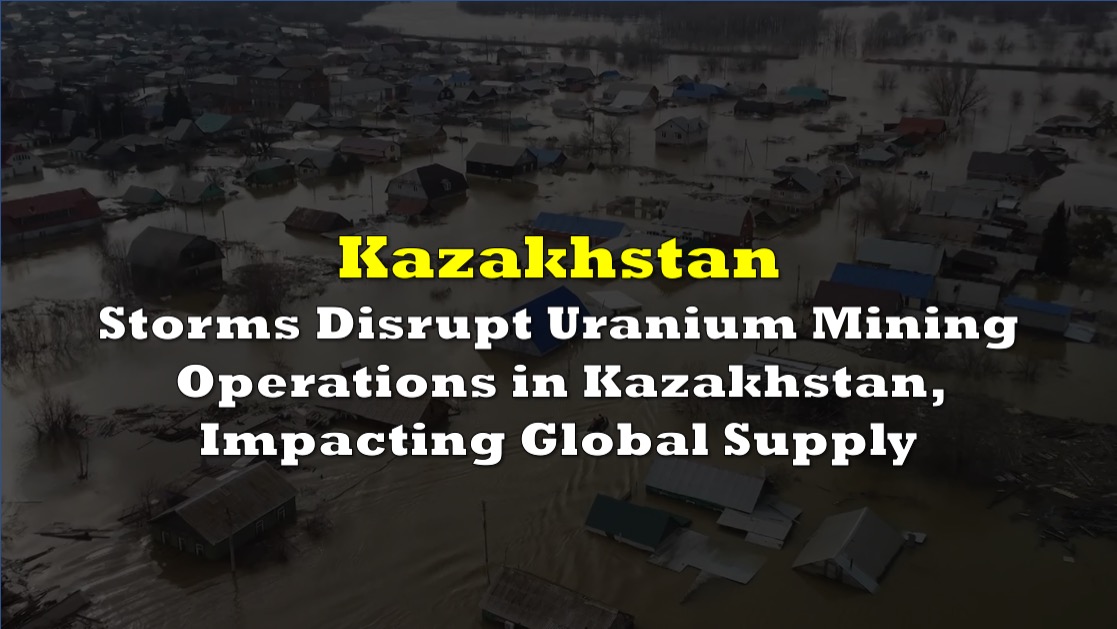Severe storms in southern Kazakhstan have disrupted operations at multiple uranium mines, including the crucial Inkai mine and processing complex, according to a report by Global X ETFs. The disturbances have constrained the delivery of reagents, affecting production at the Inkai facility.
Global X ETFs highlighted the challenges faced by uranium miners amidst the disruptions. Despite uranium spot prices consolidating below $100 due to various factors such as utilities’ buying pause and hedge funds’ profit-taking, prices have remained at levels not seen in 16 years.

The market has been buoyed by global governments’ support for nuclear energy, with expansion plans announced by countries like Ukraine and Serbia.
The flooding in Kazakhstan, where Kazatomprom, the main producer of uranium, operates, has exacerbated supply constraints in the market. Storms caused by melting snow have further hindered operations at multiple uranium mines in the region, including the Inkai mine and processing complex.
The Inkai project, managed by the Joint Venture Inkai, a partnership between Cameco and Kazatomprom, has been significantly affected by the disruptions. Reagent delivery vehicles have been constrained, impacting production activities. However, once access roads are restored, normal operations at the Inkai facility are expected to resume within three months.
Wrong reference?
However, an X user has posted a question regarding the sourcing of information in the Global X ETFs report. While the report cites a source published on March 19, 2024, it was also pointed out that the only available reference corresponds to a publication from March 19, 2014.
Now, this is quite strange… @GlobalXETFs report uses a source that they label as published on 19 March 2024, but the only reference I could find is one dating back to 19 March 2014…
— Praise ꓘeK Capital (@PraiseKek) April 21, 2024
Has the author overlooked the dates while researching for his article? pic.twitter.com/bs8sTOCgcm
This discrepancy has led to speculation about the accuracy of the information presented in the report. It raises concerns about whether the author overlooked the dates while conducting research for the article or if there was a misinterpretation of the data.
Severe flooding hit parts of Kazakhstan and Russia, mainly in the Ural Mountains and Siberia, caused by melting snow, leading to the collapse of the Orsk Dam. The floods caused at least eight deaths and extensive damage, covering an area as large as western Europe. The latest Ministry of Emergency Situations data reveals significant progress in flood relief efforts across the country. Over 24,000 people have returned to their homes, but nearly 9,000, including over 3,800 children, remain in temporary accommodation centers.
In the West Kazakhstan Region, the Zhaiyk River’s water level continues to rise, prompting the evacuation of over 13,000 individuals. Meanwhile, 13,000 country houses remain flooded in the region. In the North Kazakhstan Region, there are no new reports of house flooding, with the water level in the Yessil River receding.
Information for this story was found via the sources mentioned within the article. The author has no securities or affiliations related to the organizations discussed. Not a recommendation to buy or sell. Always do additional research and consult a professional before purchasing a security. The author holds no licenses.









